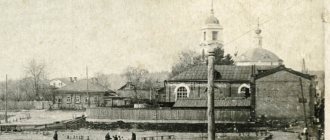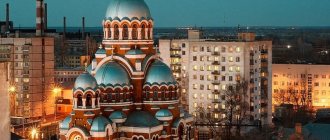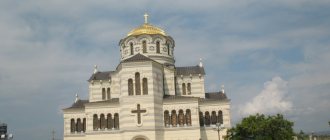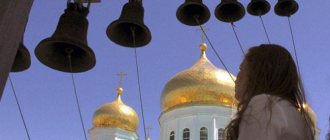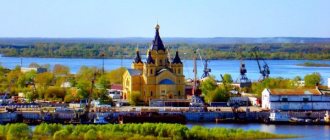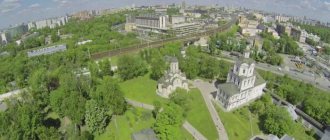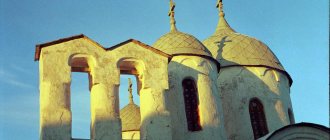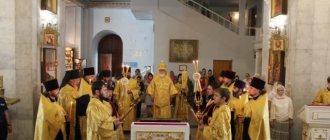Mir
Russia Udmurt Republic Izhevsk Alexander Nevsky Cathedral (Izhevsk) Map is loading...
{"format":"leaflet","minzoom":false,"maxzoom":false,"limit":50,"offset":0,"link":"all","sort":[""], "order":[],"headers":"show","mainlabel":"","intro":"","outro":"","searchlabel":"\u2026 \u0441\u043b\u0435\ u0434\u0443\u044e\u0449\u0438\u0435 \u0440\u0435\u0437\u0443\u043b\u044c\u0442\u0430\u0442\u044b","default":"","import-annotation":false,"width ":"auto","height":"350px","centre":{"text":"","title":"""link":"""lat":56.84409600000000040154191083274781703948974609375,"lon": 53.2006020000000034997356124222278594970703125,"icon":""},"title":"","label":"","icon":"","lines":[],"polygons":[],"circles":[ ],"rectangles":[],"copycoords":false,"static":false,"zoom":8,"defzoom":14,"layers":["OpenStreetMap"],"image layers":[] ,"overlays":[],"resizable":false,"fullscreen":true,"scrollwheelzoom":true,"cluster":false,"clustermaxzoom":9,"clusterzoomonclick":true,"clustermaxradius":80, "clusterspiderfy":true,"geojson":"","clicktarget":"","showtitle":true,"hidenamespace":false,"template":"","userparam":"","activeicon": "","pagelabel":false,"ajaxcoordproperty":"","ajaxquery":"","locations":[{"text":"\u003Cb\u003E\u003Ca href=\"/palomnik/%D0% A1%D0%BE%D0%B1%D0%BE%D1%80_%D0%90%D0%BB%D0%B5%D0%BA%D1%81%D0%B0%D0%BD%D0%B4% D1%80%D0%B0_%D0%9D%D0%B5%D0%B2%D1%81%D0%BA%D0%BE%D0%B3%D0%BE_(%D0%98%D0%B6%D0 %B5%D0%B2%D1%81%D0%BA)\» title=\»\u0421\u043e\u0431\u043e\u0440 \u0410\u043b\u0435\u043a\u0441\u0430\u043d\u0434\u0440\ u0430 \u041d\u0435\u0432\u0441\u043a\u043e\u0433\u043e (\u0418\u0436\u0435\u0432\u0441\u043a)\»\u003E\u0421\u043e\u0431\u043e \u0440 \u0410\u043b\ u0435\u043a\u0441\u0430\u043d\u0434\u0440\u0430 \u041d\u0435\u0432\u0441\u043a\u043e\u0433\u043e (\u0418\u0436\u0435\u0432\u0 441\u043a)\u003C/a\ u003E\u003C/b\u003E\u003Chr /\u003E\u003Ca href=\»/palomnik/%D0%A1%D0%B2%D0%BE%D0%B9%D1%81%D1%82%D0%B2% D0%BE:%D0%90%D0%BD%D0%BD%D0%BE%D1%82%D0%B0%D1%86%D0%B8%D1%8F\» title=\»\u0421\u0432 \u043e\u0439\u0441\u0442\u0432\u043e:\u0410\u043d\u043d\u043e\u0442\u0430\u0446\u0438\u044f\u003E\u0410\u043d\u043d\u043e \u0442\u0430\u0446\ u0438\u044f\u003C/a\u003E: "'\u0410\u043b\u0435\u043a\u0441\u0430\u0301\u043d\u0434\u0440\u043e-\u041d\u0435\u0301\u0432\u04 41\u043a\u0438\ u0439 \u0441\u043e\u0431\u043e\u0301\u0440 \u0432 \u0418\u0436\u0435\u0432\u0441\u043a\u0435"\u003Cspan class=\"smw-highlighter\" data-type=\"2\" data-state=\"persistent\" data-title=\"\u0418\u043d\u0444\u043e\u0440\u043c\u0430\u0446\u0438\u044f\" title=\"\u0026#039;\u0026#039 ;\u0026#039;\u0410\u043b\u0435\u043a\u0441\u0430\u0301\u043d\u0434\u0440\u043e-\u041d\u0435\u0301\u0432\u0441\u043a\u0438\u0 439\u0441\u043e\ u0431\u043e\u0301\u0440 \u0432 \u0418\u0436\u0435\u0432\u0441\u043a\u0435\u0026#039;\u0026#039;\u0026#039; 2014 f\u0440\u0430\u0432\u043e\ u0441\u043b\u0430\u0432\u043d\u044b\u0439 \u0445\u0440\u0430\u043c \u0418\u0436\u0435\u0432\u0441\u043a\u043e\u0439 \u0438 \ u0423\u0434\u043c\u0443\u0440\ u0442\u0441\u043a\u043e\u0439 \u0435\u043f\u0430\u0440\u0445\u0438\u0438. \u0420\u0430\u0441\u043f\u043e\u043b\u043e\u0436\u0435\u043d \u0432 \u0438\u0441\u0442\u043e\u0440\u0438\u0447\u0435\u0441\ u043a\u043e\u043c\u0446\u0435 \u043d\u0442\u0440\u0435 \u0433\u043e\u0440\u043e\u0434\u0430. \u0425\u0440\u0430\u043c \u043f\u043e\u0441\u0442\u0440\u043e\u0435\u043d \u0432 1823 \u0433\u043e\u0434\u0443 \u043f\u043e \u043e\u0431\u0440\u0430\u0437\ u0446\u0443 \u0410\u043d\u0434\u0440\u0435\u0435\u0432\u0441\u043a\u043e\u0433\u043e \u0441\u043e\u0431\u043e\u0440\u0430 \u 0432\u041a\u0440\u043e\u043d\ u0448\u0442\u0430\u0434\u0442\u0435 (\u0430\u0432\u0442\u043e\u0440 \u043f\u0440\u043e\u0435\u043a\u0442\u0430 \u2014 \u0437\ u043d\u0430\u043c\u0435\u043d \u0438\u0442\u044b\u0439 \u0430\u0440\u0445\u0438\u0442\u0435\u043a\u0442\u043e\u0440 \u0410\u043d\u0434\u0440\u0435\u044f\ u043d\u0417\u0430\u0445\u0430 \u0440\u043e\u0432).\»\u003E\u003Cspan class=\»smwtext\»\u003E \u2026 \u003C/span\u003E\u003Cspan class=\»smwttcontent\»\u003E»'\u0410\u043b\u0435 \u043a\u0441\u0430\u0301\u043d\u0434\u0440\u043e-\u041d\u0435\u0301\u0432\u0441\u043a\u0438\u0439 \u0441\u043e\u0431\u043e\ u0301\u0440\u0432\u0418\ u0436\u0435\u0432\u0441\u043a\u0435"' \u2014 \u043a\u0430\u0444\u0435\u0434\u0440\u0430\u043b\u044c\u043d\u044b\u0439 (\u0441 1994\u0433\u043e\u0434\ u0430) \u043f\u0440\u0430\u0432\u043e\u0441\u043b\u0430\u0432\u043d\u044b\u0439 \u0445\u0440\u0430\u043c \u0418\u0436\u0435\ u0432\u0441\u043a\u043e\u0439 \u0438 \u0423\u0434\u043c\u0443\u0440\u0442\u0441\u043a\u043e\u0439 \u0435\u043f\u0430\u0440\u0445\u0438\u0438. \u0420\u0430\u0441\u043f\u043e\u043b\u043e\u0436\u0435\u043d \u0432 \u0438\u0441\u0442\u043e\u0440\u0438\u0447\u0435\u0441\ u043a\u043e\u043c\u0446\u0435 \u043d\u0442\u0440\u0435 \u0433\u043e\u0440\u043e\u0434\u0430. \u0425\u0440\u0430\u043c \u043f\u043e\u0441\u0442\u0440\u043e\u0435\u043d \u0432 1823 \u0433\u043e\u0434\u0443 \u043f\u043e \u043e\u0431\u0440\u0430\u0437\ u0446\u0443 \u0410\u043d\u0434\u0440\u0435\u0435\u0432\u0441\u043a\u043e\u0433\u043e \u0441\u043e\u0431\u043e\u0440\u0430 \u 0432\u041a\u0440\u043e\u043d\ u0448\u0442\u0430\u0434\u0442\u0435 (\u0430\u0432\u0442\u043e\u0440 \u043f\u0440\u043e\u0435\u043a\u0442\u0430 \u2014 \u0437\ u043d\u0430\u043c\u0435\u043d \u0438\u0442\u044b\u0439 \u0430\u0440\u0445\u0438\u0442\u0435\u043a\u0442\u043e\u0440 \u0410\u043d\u0434\u0440\u0435\u044f\ u043d\u0417\u0430\u0445\u0430 \u0440\u043e\u0432).\u003C/span\u003E\u003C/span\u003E \u2014 \u0437\u043d\u0430\u043c\u0435\u043d\u0438\u0442\u044b\u0439 \u043 0\u0440\u0445\u0438 " ","title":"\ u0421\u043e\u0431\u043e\u0440 \u0410\u043b\u0435\u043a\u0441\u0430\u043d\u0434\u0440\u0430 \u041d\u0435\u0432\u0441\u043a\u0 43e\u0433\u043e (\u0418\u0436 \u0435\u0432\u0441\u043a)","link":"""lat":56.84409600000000040154191083274781703948974609375,"lon":53.20060200000000349973561242222 78594970703125,"icon":""}],"imageLayers":[]}
56.844097; 53.201196
Russia, Udmurt Republic, Izhevsk, Maxim Gorky street, 66
Izhevsk, Udmurt Republic 426008
Russia
Phones:
+7 (922) 5268531 (priest on duty), +7 (3412) 786504, 8 3412 51‑04-77
Email:
Alexander Nevsky Cathedral in Izhevsk
- cathedral (since 1994) Orthodox church of the Izhevsk and Udmurt diocese. Located in the historical center of the city. The temple was built in 1823 on the model of St. Andrew's Cathedral in Kronstadt (the author of the project is the famous architect Andreyan Zakharov). Initially it was planned as the central temple of the Izhevsk plant. In the 1930s, the temple was looted and closed; later, the Colossus cinema operated there. In 1990, with the active participation of Bishop Palladium, it was returned to the believers.
History[edit]
As a result of the fire of 1810, a significant part of the city and the main temple at that time, the Church of Elijah the Prophet, were destroyed, and the question arose about the construction of a new temple. The very next year, factory architect S.E. Dudin completed a design for a monumental cathedral with three altars and three bell towers, but the project was rejected due to excessive pomp and cost. Instead of the rejected project, the St. Petersburg authorities recommended taking the project of St. Andrew's Cathedral in Kronstadt as a model. Dudin adjusted the drawings based on local conditions, for example, replacing granite with factory casting, and also simplified certain architectural forms.
Construction was completed in 1823. The central chapel was consecrated in honor of the holy noble prince Alexander Nevsky, the southern limit - in honor of the holy Great Martyr Catherine, the northern - in honor of the Kazan Icon of the Mother of God, the lower, "cave" church - in honor of the holy martyrs Blasius and Modest.
In 1824, while passing through Izhevsk, Emperor Alexander I visited the cathedral. In 1871, a trusteeship was opened at the Cathedral, which was engaged in educational charitable work. Since 1875, a Sunday school operated at the church. Later, other schools, charitable commissions and a temperance society were formed at the cathedral.
In 1929, the cathedral was closed at the request of the youth section of the Union of Militant Atheists, and in the same year the bell tower was destroyed and the cathedral was converted into a club. Since 1930, the cathedral building served as a children's club and cinema, and later as a museum of atheism. In 1932, after a new reconstruction, the Colossus cinema opened in the building of the former cathedral. In 1937, the dome of the temple was dismantled, after which the mutilated building was classified as an “architectural monument of the first category.”
The cathedral was returned to believers in 1990, and after the preparation of a restoration project, work began on the revival of the cathedral in 1992. By the end of 1993, the renovation was completed, a new baptismal temple, a Jordan for the consecration of water, a belfry were built on the territory of the cathedral, and on January 2, 1994 the consecration of the cathedral took place.
Architecture
Today, a spiritual and educational center has formed around the Izhevsk Alexander Nevsky Cathedral, which plays an important role in the life of the Udmurt and Izhevsk diocese. The temple ensemble located in the center of the city is a unique architectural monument of the Classical era.
Belfry at Alexander Nevsky Cathedral
The following buildings are located on the territory of the modern temple complex:
- Cathedral in honor of Alexander Nevsky;
- Church of St. Nicholas the Wonderworker;
- tomb of A.F. Deryabin;
- canopy over the Jordan for the blessing of water.
There are two churches in the main building of the ensemble:
- the top one in honor of the holy noble prince Alexander Nevsky;
- the lower one is the baptismal church of All Saints who shone forth in the Russian land.
The main part of the cube-shaped building is topped with a helmet-shaped dome mounted on a large light drum. The central part of the building is divided into three naves using two rows of columns. Its ceiling is a box vault. Above the rectangular porch there is a two-tier bell tower topped with a gilded spire.
The porch is made in the form of a Greek portico with six Ionic columns. The same porticos adjoin the northern and southern facades of the main part of the building, forming a cross in plan. The facades of the building are decorated with a minimal number of decorative elements.
Current state[edit]
The interior decoration of the cathedral
The cathedral is the ideal embodiment of Russian classicism - strict, “sovereign”, cold in a St. Petersburg way. Square in plan, cubic in mass, the cold temple is covered with a spherical vault on a drum. The thrust is dampened by four powerful pylons with cut corners. Two arches lying on the west-east axis are open to the altar and the main nave, and from the south and north they are treated as niches.
The main nave is separated from the side nave by two colonnades of the Ionic order, each of four columns. The ceiling above the main nave is a box vault. The cruciform plan, traditional for most Orthodox churches, is ensured by the introduction of two six-column porticoes from the south and north of the cold church. They are also of the Ionic order, but the columns here are much thinner than the internal columns and with a pronounced thickening. Each internal column on the northern and southern walls of the refectory has a corresponding pilaster.
The cathedral is painted in academic style.
Interiors of the Alexander Nevsky Cathedral
Special attention was paid to the interiors of the Alexander Nevsky Church, because church life goes beyond the scope of worship and affects many other aspects: public, social, educational. Alexander Nevsky Church is an excellent example of a full-fledged temple complex, which is also interesting from the point of view of its design.
Initially, the temple was decorated in a strict classical style, but in 1870 its interiors became more lush and playful: painters and carvers actively used gilding of stucco decoration, various elements, as well as iconostases and domes, and added ornamental motifs that were popular at that time and coloring. “marbled” technique. The interior appearance of the cathedral did not correspond to its dispassionate external decoration. During the Soviet years, the interior paintings, as well as many icons from the iconostasis, were irretrievably lost. The modern interiors of the Alexander Nevsky Church are made in the Byzantine style.
History of the Alexander Nevsky Cathedral in Izhevsk
A sad event in 1810 in the form of a powerful fire destroyed the wooden Church of Elijah the Prophet. Emperor Alexander the First allocated money for the construction of the temple, and the arms factory participated in the construction. Soon the cathedral became a cultural and educational center: a Sunday school operated, a board of trustees and a temperance committee were opened.
The revolutionary events of the seventeenth year of the last century brought changes to the activities of the church. The building was expropriated and the bell tower was demolished. The cathedral began to be used as a club, a cinema and an atheistic museum. Bells, gold, silver, and diamonds were confiscated.
For a long time, the temple was threatened with destruction; they even intended to open a monument to the history of the revolution. But trouble passed the building by and in the early nineties of the last century it was returned to the parishioners. Since that time, restoration work began. The cathedral is named in honor of the patron saint Alexander Nevsky and its days, September 12 and December 6, are celebrated as Orthodox holidays in the city of Izhevsk.
The best article for you, go to: Holy Trinity Izmailovsky Cathedral St. Petersburg
Story
Construction
As a result of the fire of 1810, a significant part of the city and the main temple at that time, the Church of Elijah the Prophet, were destroyed, and the question arose about the construction of a new temple. The very next year, factory architect S.E. Dudin completed a design for a monumental cathedral with three altars and three bell towers, but the project was rejected due to excessive pomp and cost. Instead of the rejected project, the St. Petersburg authorities recommended taking the project of St. Andrew's Cathedral in Kronstadt as a model. Dudin adjusted the drawings based on local conditions, for example, replacing granite with factory casting, and also simplified certain architectural forms.
The first project developed by Dudin based on Zakharov’s drawings. Incision. 1819
Construction was completed in 1823. The central chapel was consecrated in honor of the holy noble prince Alexander Nevsky, the southern limit - in honor of the holy Great Martyr Catherine, the northern - in honor of the Kazan Icon of the Mother of God, the lower, "cave" church - in honor of the holy martyrs Blasius and Modest.
Temple work
In 1824, while passing through Izhevsk, Emperor Alexander I visited the cathedral. In 1871, a trusteeship was opened at the Cathedral, which was engaged in educational charitable work. Since 1875, a Sunday school operated at the church. Later, other schools, charitable commissions and a temperance society were formed at the cathedral.
Closing of the temple
In March 1922, more than 5 pounds of silver, gold and precious stones were confiscated from the cathedral. In 1929, the cathedral was closed at the request of the youth section of the Union of Militant Atheists, and in the same year the bell tower was destroyed and the cathedral was converted into a club. Later, all 24 bells with a total weight of 650 pounds were confiscated. Since 1930, the cathedral building served as a children's club and cinema, and later as a museum of atheism. In 1932, after a new reconstruction, the Colossus cinema opened in the building of the former cathedral. In 1937, the dome of the temple was dismantled, after which the mutilated building was classified as an “architectural monument of the first category.”
Recovery
The cathedral was returned to believers in 1990. After preparing the restoration project (architect S. A. Makarov), work began on the revival of the cathedral in 1992. By the end of 1993, the renovation was completed, a new baptismal temple, a Jordan for the blessing of water, and a belfry were built on the territory of the cathedral. On January 2, 1994, the consecration of the cathedral took place. During the restoration, the tomb of the founder of the Izhevsk arms factory, A.F. Deryabin, was also built on the territory of the cathedral.
On October 5, 1994, by resolution of the Synod, the temple was given the status of a cathedral.
The cathedral has catechetical courses and a parish Sunday school.
Address and schedule of services
Address of the Alexander Nevsky Cathedral: Izhevsk, st. Gorky, 66. Opening hours: Monday to Sunday 07:00 - 19:00. You can get to the temple by bus, stop “Alexander Nevsky Cathedral”. Also on trolleybuses No. 6, 6d, 9, stop “Summer Garden named after. Gorky."
Schedule of services of the Alexander Nevsky Cathedral in Izhevsk:
- daily: 09:30 memorial service for the deceased, 10:00 custom prayer service;
- Sunday: liturgy at 07:30, memorial service 09:30;
- Monday through Thursday funeral service at 9:30 a.m.;
- Friday: funeral service 09:30, evening service 16:00;
- Saturday: hymn at 07:30, evening service at 16:00;
- September 12 and December 6 are days of veneration of St. Alexander Nevsky.
Baptism:
- on Saturday 10:30 (funeral Saturdays 12:00);
- on Sunday 11:30.
God bless you!
Saint Alexander Nevsky
The victory on the Neva River over the Swedes and the ice battle on Lake Peipus with the German knights brought glory to the Novgorod prince. Successful military operations secured Russian borders in the west, but in the east there was a strong threat from the Golden Horde.
Therefore, Alexander Nevsky was forced to pay tribute to the khans from Russian lands. He refused an offer to convert to the Catholic faith in exchange for help in the fight against the Mongol invaders. After the Suzdal unrest, the prince personally went to the Golden Horde with gifts. He spent more than six months there, and upon returning home he fell ill and died. After his death, he was canonized.
The best article for you, go to: Naval St. Nicholas Cathedral Kronstadt
The great commander and Prince of Novgorod found the strength to resist the Western invaders and improve relations with the Golden Horde. The day of the Nystadt Truce with the Swedes on August 30 is considered the day of St. Alexander Nevsky.
Empress Catherine was the first to found the Order of Nevsky, which existed until the seventeenth year of the last century. During the Great Patriotic War, the Soviet-style Alexander Nevsky award was established. Cathedrals are named after the great commander in the cities of Russia Ekaterinburg, Petrozavodsk, Kurgan, Novosibirsk and abroad in Sofia, Potsdam, Copenhagen, Makhachkala, Paris.
Activities of the parish
Divine services in the temple are held daily at 7.30 and 16.00. On weekends and holidays there are two morning services at 6.30 and 8.30.
Divine service in the Alexander Nevsky Cathedral
In addition to the main liturgical activities, the clergy of the Alexander Nevsky Cathedral carry out active social and educational services. It consists of the following actions:
- conducting work aimed at combating various sects;
- assistance to parishioners who find themselves in difficult life situations;
- spiritual and material support for low-income and large families;
- organizing classes for children and adults in Sunday school;
- coordination of the activities of the youth Orthodox team;
- organizing the work of a children's Orthodox camp.
Attention: more information about the schedule of services, the work of parish educational and public organizations can be found on the official website of the cathedral or by calling its information service.
Shrines
Over the decades after the church was returned to the believers of Izhevsk, its collection was replenished with many shrines.
- An exact list of the Pochaevskaya Icon of the Mother of God, located above the main gate of the central iconostasis. On the eve of the day of the Annunciation and the feast of the venerated image, it is removed from the iconostasis and the ritual of anointing with oil is performed.
Interior decoration of Alexander Nevsky Cathedral - The temple image of the Holy Blessed Prince Alexander Nevsky with a particle of relics was ordered for the 195th anniversary of the foundation of the cathedral.
- The icon “Washing the Feet by a Disciple” is one of the oldest temple shrines, located in one of the iconostases until the cathedral was closed. The image, in need of serious restoration, was returned to the parish in 1993. The shrine, restored at the expense of a benefactor, was consecrated in 2014.
- The icon “Head of St. John the Baptist” has a miraculous history of appearing in a holy place. Cut in half, it ended up in the church in the early 90s. The desecrated image was placed in a warehouse, and a few days later it was found miraculously completely restored.
- The Life-Giving Cross of the Lord is a unique shrine with more than a century-old history. It was made by Athonite monks for the 300th anniversary of the House of Romanov. In Jerusalem, where the cross was brought for consecration, a stone from Golgotha and a piece of the Life-giving Cross of the Lord were inserted into it. Due to the establishment of Soviet power in Russia, the relic remained in the Holy City until the 80s. XX century Metropolitan Nikolai of Udmurt and Izhevsk returned her to Izhevsk.
In addition to the listed valuables, the cathedral contains a reliquary with particles of the relics of many Orthodox saints.
